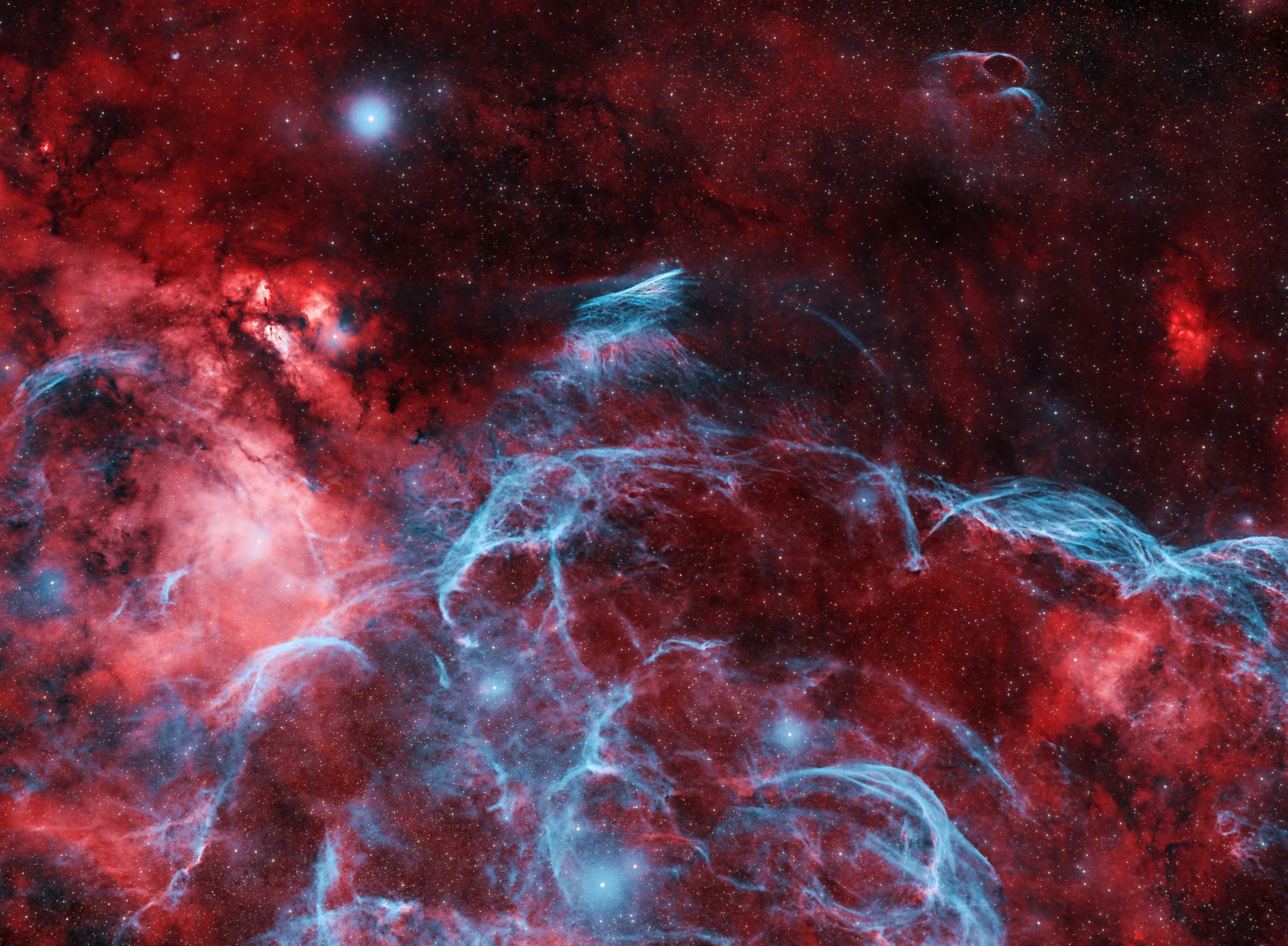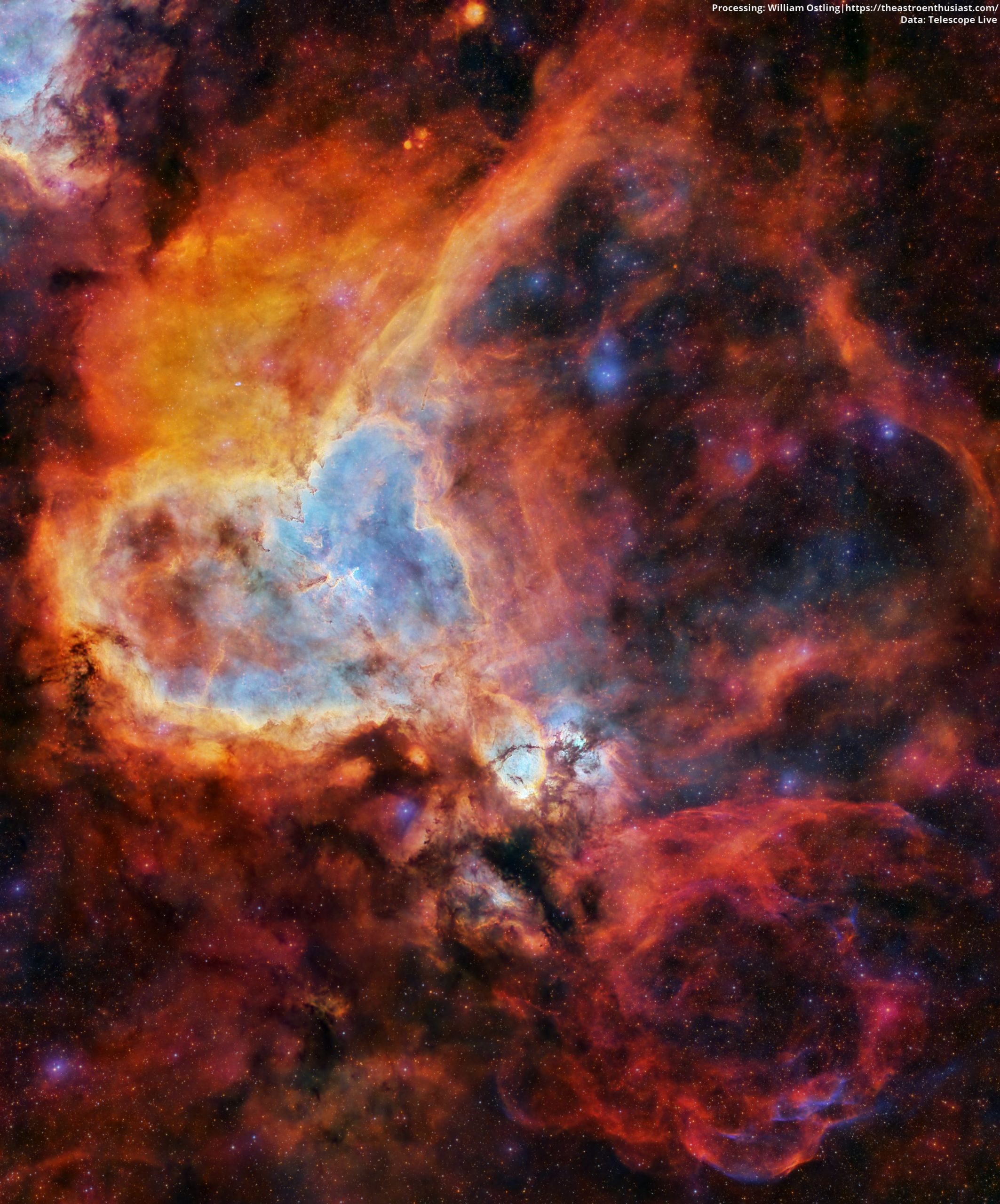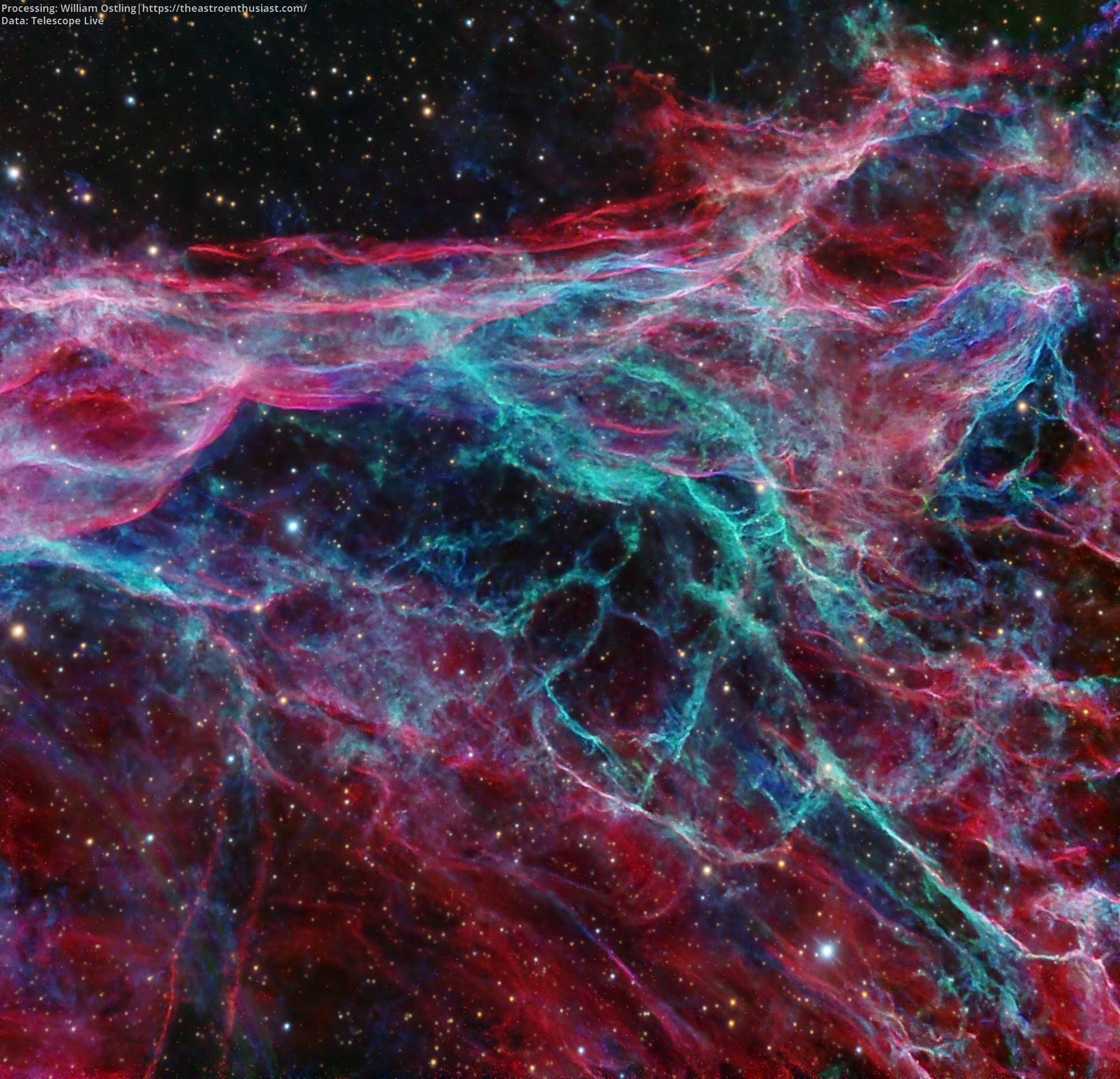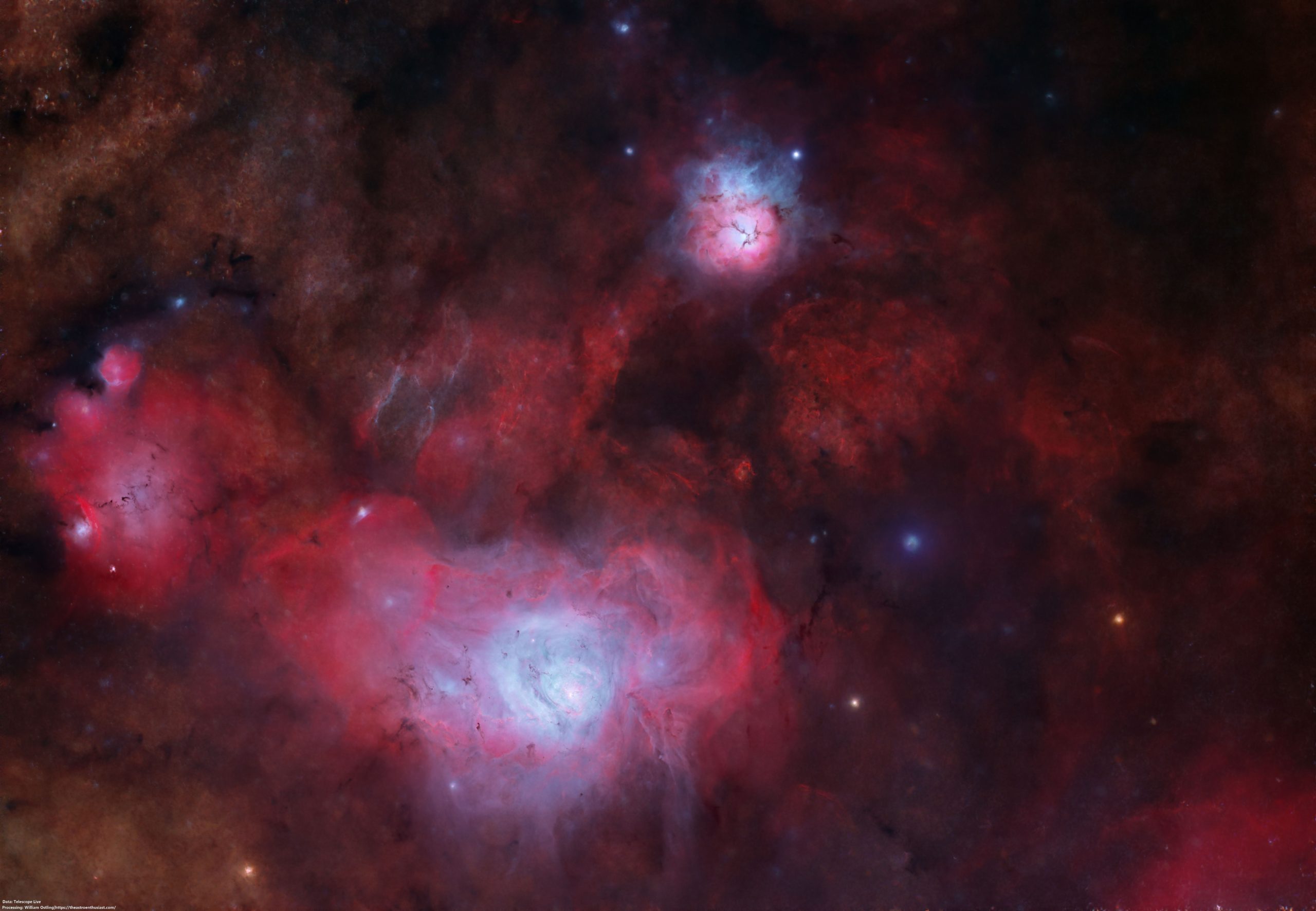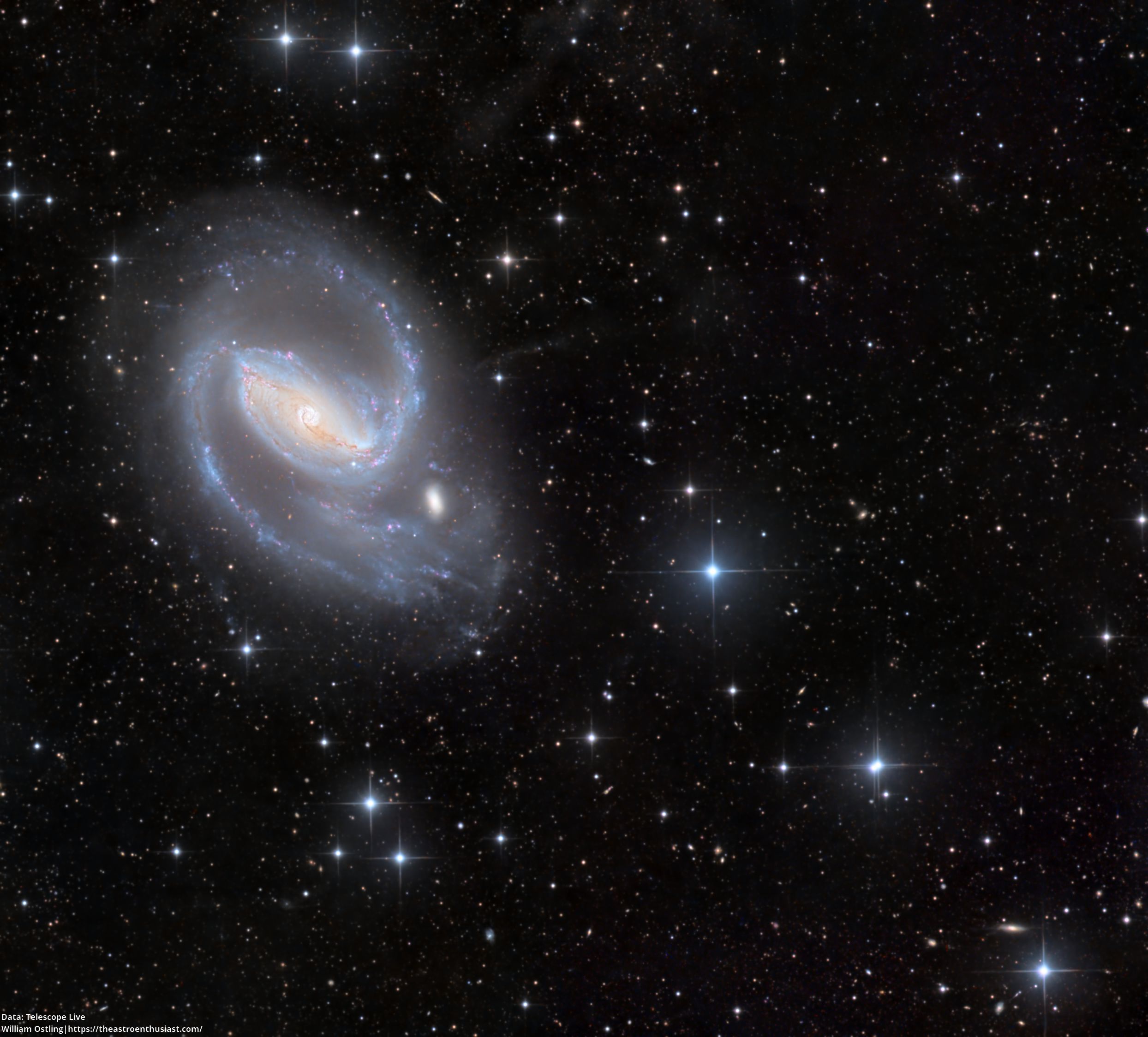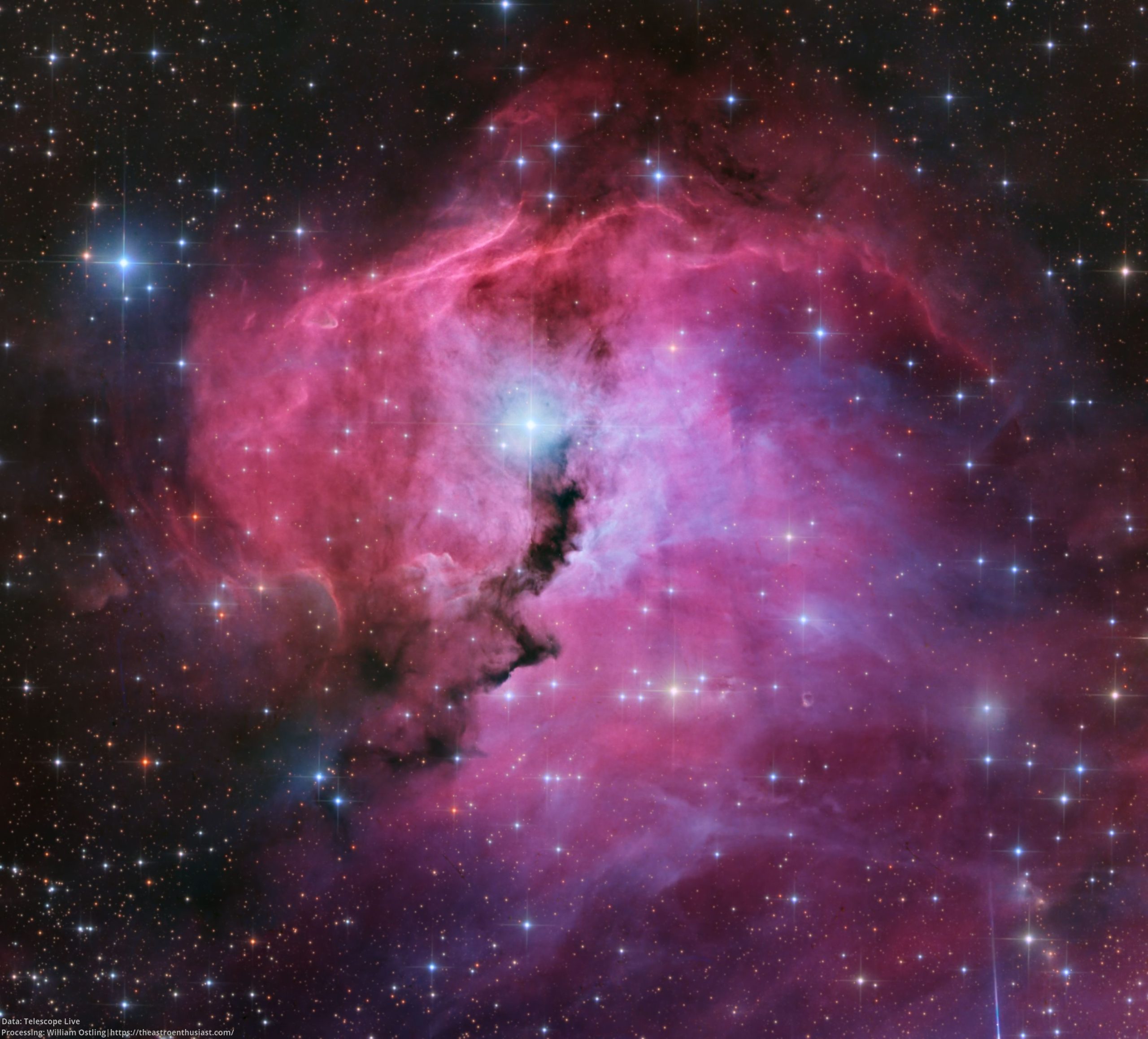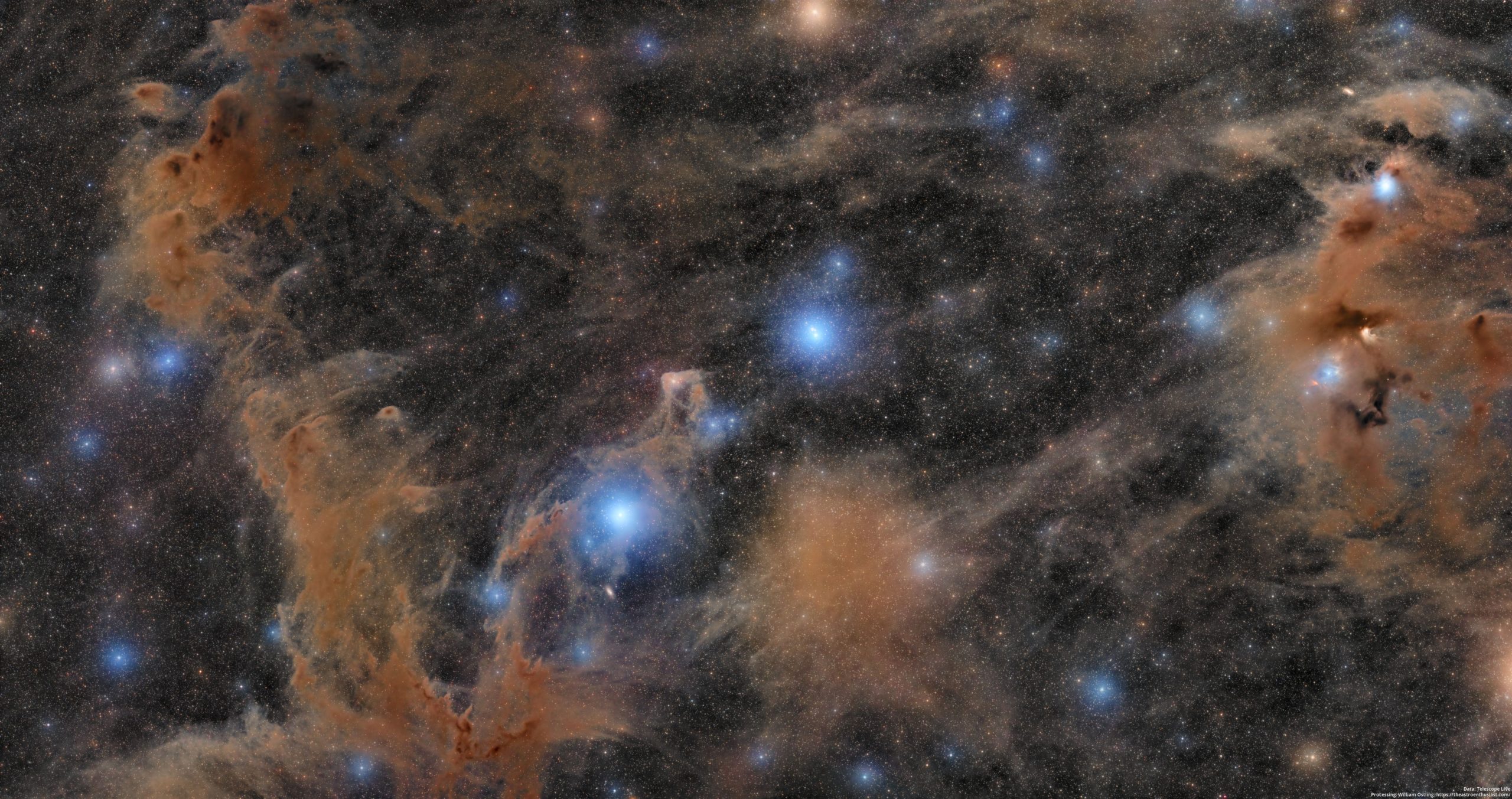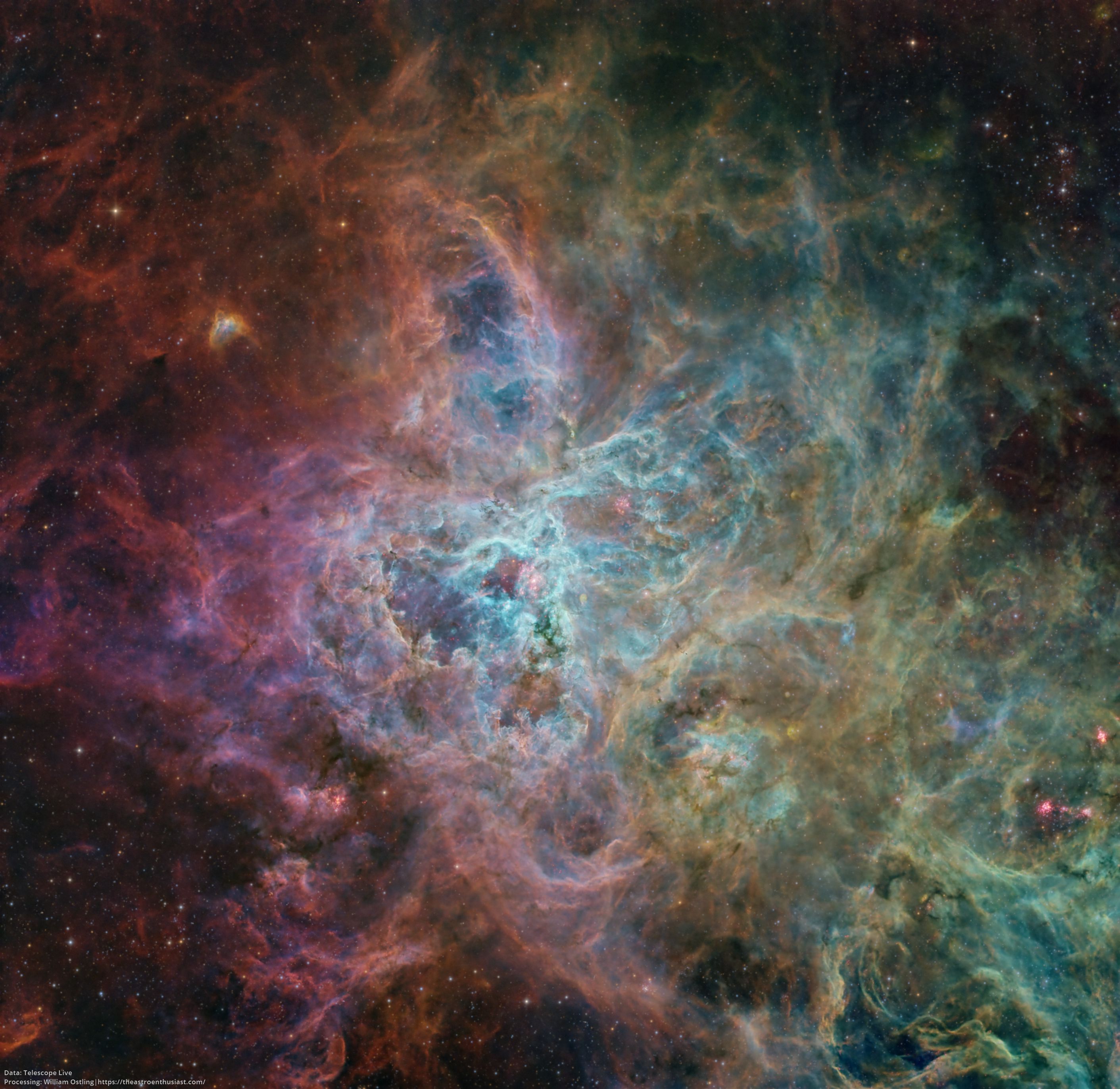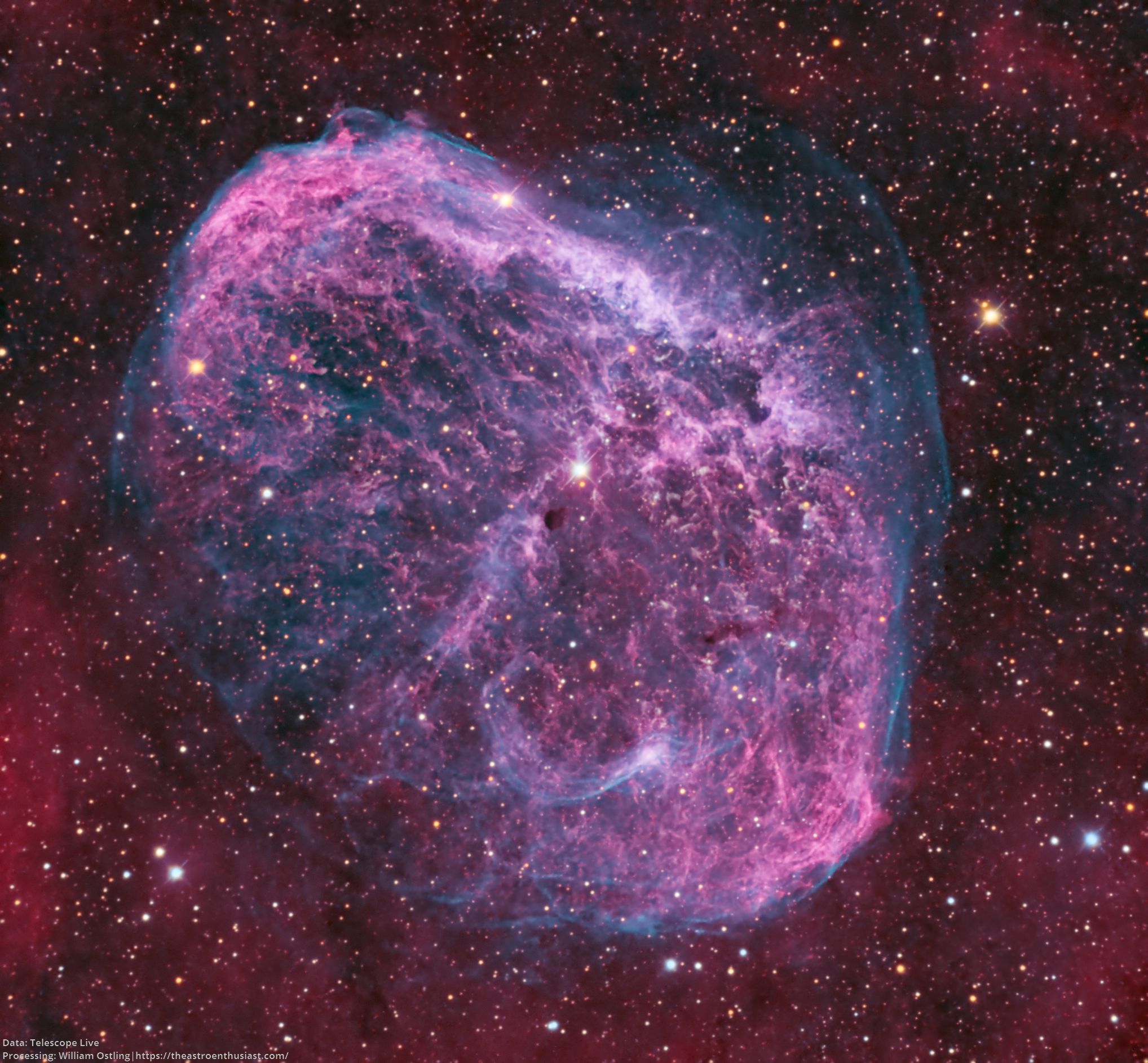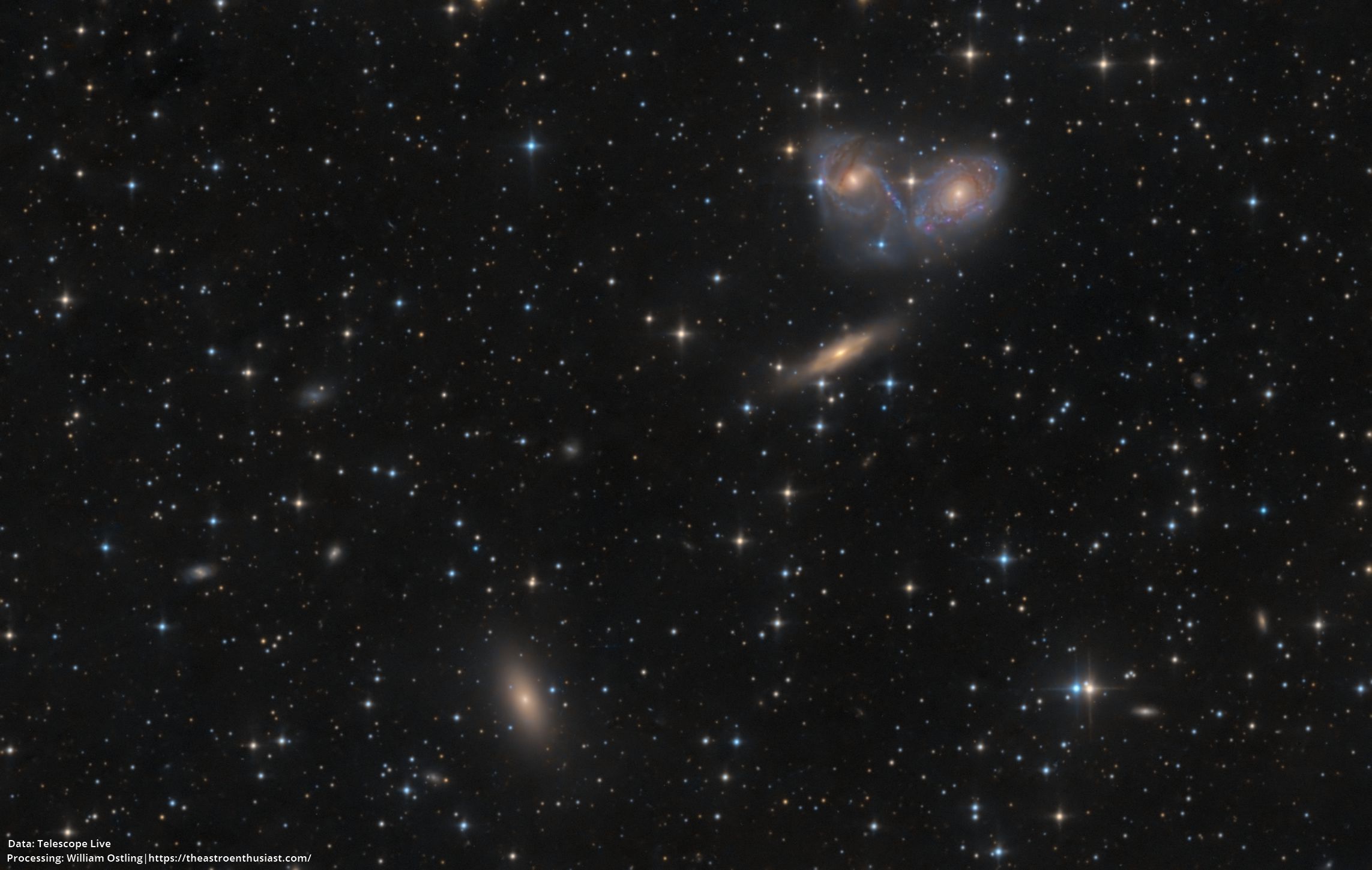The Pencil Nebula in the Vela SNR – A Widefield Astrograph
This data from telescope live was pleasantly challenging to process! While the individual filaments hade high SNR, the background and fainter details were not, so figuring out a noise reduction technique that preserved the small detail but smoothed the background was a fun challenge. There are a couple of features in this image that I haven’t noticed before that I did my best to show off: First, there appear to be Oiii-Ha diffuse shock fronts above and below the actual pencil nebula. Additionally, there is a very […]
Read more